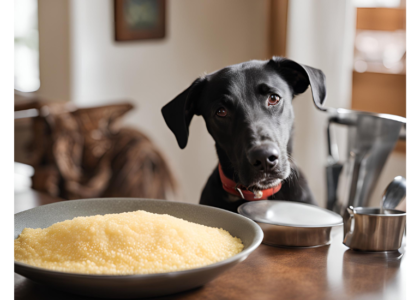Yes, dogs can safely eat tilapia fish. It should be cooked and served without any added seasonings.
Tilapia is a popular fish that offers numerous health benefits, not just for humans but for our canine companions as well. Rich in protein and essential omega-3 fatty acids, tilapia can be a healthy addition to your dog’s diet.
It’s important to ensure that the tilapia is thoroughly cooked and free from bones to prevent any choking hazards or internal injuries. Serving it plain, without any garlic, onions, or heavy spices, is crucial since certain seasonings can be harmful to dogs.
Table of Contents
Nutritional Value Of Tilapia Fish
Pet owners often wonder about the best foods for their furry friends. Can dogs eat tilapia fish? Yes, they can! Tilapia is not only safe for dogs but also packed with essential nutrients. Let’s dive into the nutritional value of tilapia fish and how it benefits your canine companion.
Protein Content
Protein is a building block for a healthy dog. Tilapia is a great protein source, helping dogs maintain strong muscles. Here are some protein-packed facts about tilapia:
- High-quality protein supports growth and repairs body tissues.
- Tilapia contains all the essential amino acids your dog needs.
- It’s easily digestible, making it a good choice for dogs with sensitive stomachs.
Dogs require a certain amount of protein daily, depending on their size and activity level. Here’s a quick look at how much protein tilapia offers:
| Tilapia Serving Size | Protein Content |
|---|---|
| 100 grams | 26 grams |
| 1 fillet (approx. 87 grams) | 22.7 grams |
Remember to cook tilapia properly before serving it to your dog. Avoid adding oils, spices, or sauces that could harm your pet.
Omega-3 Fatty Acids
Omega-3 fatty acids are vital for your dog’s health. They support brain function, reduce inflammation, and keep the coat shiny. Here’s why tilapia is a smart choice for omega-3s:
- It helps fight diseases like arthritis and heart problems.
- Omega-3s enhance cognitive functions in puppies and older dogs.
- They contribute to a lustrous, healthy coat and skin.
How much omega-3 can dogs get from tilapia? Consider the following:
| Tilapia Serving Size | Omega-3 Content |
|---|---|
| 100 grams | 150 mg |
| 1 fillet (approx. 87 grams) | 130 mg |
While tilapia isn’t the highest source of omega-3, it’s a beneficial addition to a balanced diet. Always ensure the fish is cooked and served plain to your dog, without harmful additives.
Dietary Considerations For Dogs
When it comes to feeding our furry friends, we often wonder about the variety of human foods safe for them. Can dogs eat tilapia fish? Yes, they can! Tilapia, a popular, lean fish, can be a healthy addition to your dog’s diet, but it’s vital to consider their overall dietary needs.
Canine Nutritional Needs
Dogs require a well-rounded diet to stay healthy. Their food must support their energy levels, muscle health, and provide vital nutrients. Here are key components of a canine diet:
- Proteins: Essential for tissue repair and muscle growth.
- Fats: Provide energy and help absorb vitamins.
- Carbohydrates: Offer energy and promote gut health.
- Vitamins and Minerals: Necessary for immune function and overall health.
A table of daily nutritional requirements for dogs can help pet owners balance these elements:
| Nutrient | Daily Requirement |
|---|---|
| Protein | 1g per pound of body weight |
| Fat | 0.5g per pound of body weight |
| Carbohydrates | Varies based on activity level |
| Vitamins/Minerals | Depends on dog size and breed |
Introducing tilapia into your dog’s diet should be done with care. The fish must be cooked without harmful oils or seasonings. Bones should be removed to prevent choking.
Potential Benefits Of Including Fish In Dog’s Diet
Fish like tilapia can be great for dogs. It offers high-quality protein and omega-3 fatty acids. These nutrients support your dog’s health in various ways:
- Lean Protein: Helps in muscle development and repair.
- Omega-3 Fatty Acids: Boost skin and coat health, reduce inflammation.
- Vitamins: Fish are rich in vitamins D and B which support bone health and energy metabolism.
Below are more benefits of adding fish to your dog’s diet:
- It’s a novel protein source, which can be good for dogs with allergies to common proteins like chicken or beef.
- It can contribute to cognitive function and vision development, thanks to omega-3s.
- It may help overweight dogs lose weight due to its lean nature.
Remember to introduce tilapia gradually and watch for any adverse reactions. Always debone the fish and cook it plainly. Ensure the fish is fresh and free from contaminants. Consult your vet before making any significant changes to your dog’s diet.

Can Dogs Safely Consume Tilapia Fish?
Tilapia is a lean source of protein and can be part of a healthy diet for dogs. But, is it safe for our furry friends? Let’s dive into the details and find out the best ways to serve tilapia to dogs.
Risks And Concerns
Although tilapia can be a tasty treat for dogs, certain risks need consideration. Here’s what you should keep in mind:
- Bones: Tilapia bones can cause choking or internal blockage. Always serve it boneless.
- Seasonings: Spices and garlic can harm dogs. Cook tilapia plain.
- Frying: Fried foods are too fatty for dogs. Steamed or baked is better.
- Mercury: While tilapia is low in mercury, too much can still be a risk.
Here’s a table summarizing the potential issues:
| Issue | Details | Prevention |
|---|---|---|
| Bones | Can cause choking or blockage | Remove all bones before serving |
| Seasonings | Can be toxic | Cook without spices or garlic |
| Frying | Too much fat | Opt for steaming or baking |
| Mercury | Can accumulate over time | Limit intake |
Precautions To Take
When adding tilapia to your dog’s diet, follow these precautions to ensure safety:
- Source Quality Fish: Choose fresh or frozen tilapia from reputable sources.
- Proper Preparation: Cook the fish thoroughly to kill any harmful bacteria.
- Serving Size: Give small portions to avoid upset stomachs.
- Introduce Slowly: Start with a tiny amount to see how your dog reacts.
Remember these key points:
- Serve tilapia plain and cooked.
- Remove all bones first.
- Monitor your dog for any signs of distress.
By adhering to these guidelines, you can safely include tilapia in your dog’s menu. It provides beneficial nutrients while keeping them happy and healthy.
Preparing Tilapia Fish For Dogs
Like many other types of fish, tilapia can be a healthy addition to your dog’s diet. It provides protein and essential fatty acids that can support skin and coat health. Yet, cooking tilapia for dogs requires specific steps to ensure it’s both safe and enjoyable for your furry friend.
Cooking Methods
When cooking tilapia for dogs, the goal is to make it easily digestible and free from harmful additives. Here’s how you can do it:
- Boiling: Boil tilapia in water until it’s fully cooked. This method is simple and doesn’t require oil or butter.
- Steaming: Steaming retains more nutrients than boiling. Place the tilapia in a steamer over boiling water until it flakes easily with a fork.
- Baking: Bake tilapia in the oven at 375°F (190°C) for about 10-12 minutes. Ensure the fish is cooked through and tender.
Remember, cooked tilapia should be plain and not mixed with any sauces or seasonings. Here’s a table summarizing the best cooking practices:
| Cooking Method | Temperature | Cooking Time |
|---|---|---|
| Boiling | – | Until cooked through |
| Steaming | – | Until flakes easily |
| Baking | 375°F (190°C) | 10-12 minutes |
Always check the fish’s internal temperature with a meat thermometer. It should reach 145°F (63°C).
Seasoning And Spices To Avoid
Seasonings and spices can be harmful to dogs. Thus, when preparing tilapia, it’s crucial to avoid adding any. Here’s a list of common seasonings that should never be used:
- Garlic and Onions: Both can cause anemia in dogs by damaging red blood cells.
- Chili: Spicy foods can upset a dog’s stomach and cause discomfort.
- Salt: Too much salt can lead to salt poisoning, with symptoms like vomiting and diarrhea.
Here are other spices to steer clear of, presented in a clear table format:
| Spice | Reason to Avoid |
|---|---|
| Nutmeg | Contains myristicin, which is toxic to dogs |
| Black Pepper | Can irritate the digestive tract |
| Mustard Seed | Can cause gastrointestinal distress |
Always serve tilapia plain, without any harmful seasonings or spices. This ensures your dog can enjoy the fish safely.
Monitoring Dog’s Health After Introducing Tilapia Fish
Monitoring your dog’s health after giving them tilapia is crucial. This ensures they digest the fish well and show no adverse reactions. Watch for any changes in their behavior or bodily functions in the days following.
Signs Of Allergies Or Digestive Issues
Just like people, dogs can show allergic reactions or digestive problems from new foods. It’s important to know what signs to look for. These include:
- Itchy skin – Scratching more than usual could signal an allergy.
- Swollen face – Pay attention to your dog’s face, especially around the eyes and lips.
- Gastrointestinal upset – Vomiting or diarrhea can occur if the fish doesn’t agree with them.
- Change in appetite – A sudden disinterest in food could be a sign.
- Respiratory issues – Listen for coughing or wheezing.
Keep a close eye on your pet’s stool as well. Here’s a simple stool health table to help you:
| Stool Quality | Possible Meaning |
|---|---|
| Hard, Dry | Dehydration or constipation |
| Soft, Loose | Possible digestive upset from tilapia |
| Watery | Could indicate more serious issues |
| Presence of Blood | Immediate vet consultation needed |
Remember, not all signs are cause for panic but do keep a watchful eye.
Consulting A Veterinarian
If you notice any of the signs mentioned, it’s time to consult your vet. They can give professional advice and run tests if needed. Here’s what to do:
- Document symptoms – Note what you observe, when it started, and how often it happens.
- Stop feeding tilapia – Until you know the cause, it’s best to remove it from their diet.
- Keep your dog hydrated – Water helps with most digestive issues.
- Bring a stool sample – This can help the vet diagnose the problem faster.
A vet might suggest the following:
- Allergy tests – To rule out other allergens.
- Food trial – To confirm tilapia as the cause.
- Diet change – If tilapia is not suitable for your dog.
Your vet’s guidance is invaluable when introducing new foods. They ensure your dog stays healthy and happy.
Frequently Asked Questions
Is Tilapia Safe For Dogs To Eat?
Yes, tilapia is safe for dogs to eat when properly cooked and served in moderation. It should be boneless, skinless, and free from any added seasonings or sauces that might be harmful to dogs. This lean fish can be a healthy addition to your dog’s diet.
Can Dogs Have Raw Tilapia?
No, dogs should not eat raw tilapia. Raw fish can carry harmful bacteria and parasites that could make your dog sick. Always cook tilapia thoroughly before feeding it to your dog to ensure it’s safe for consumption.
How Often Can Dogs Eat Tilapia?
Dogs can eat tilapia once or twice a week. It’s important to introduce it into their diet gradually and in small portions to avoid digestive upset. Tilapia should be an occasional treat, not a regular part of your dog’s daily meals.
What Are The Benefits Of Tilapia For Dogs?
Tilapia is rich in protein and omega-3 fatty acids, which can support your dog’s muscle development and promote a healthy coat and skin. It’s also a good alternative protein source for dogs with allergies to more common proteins like chicken or beef.










